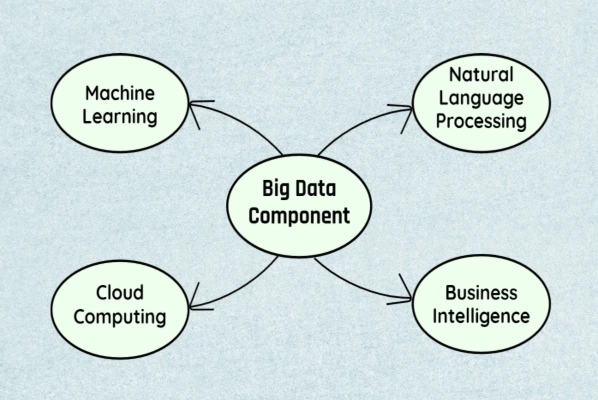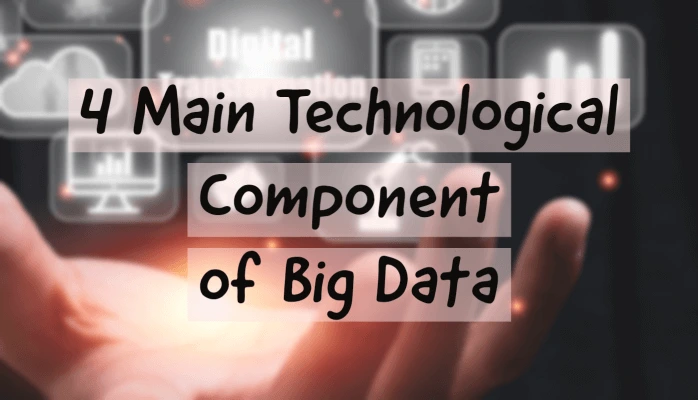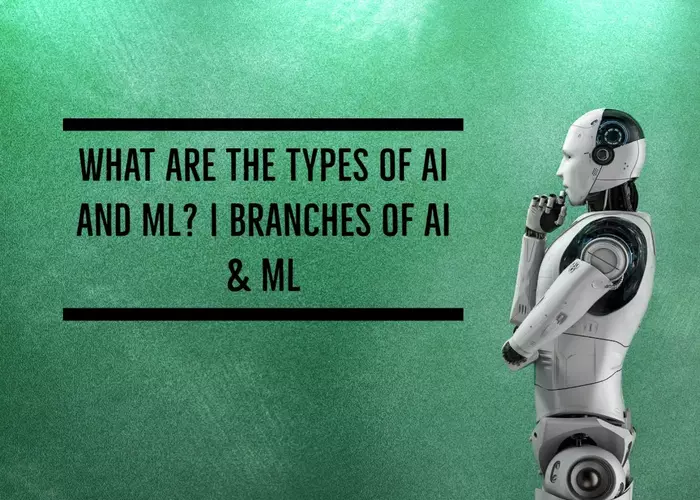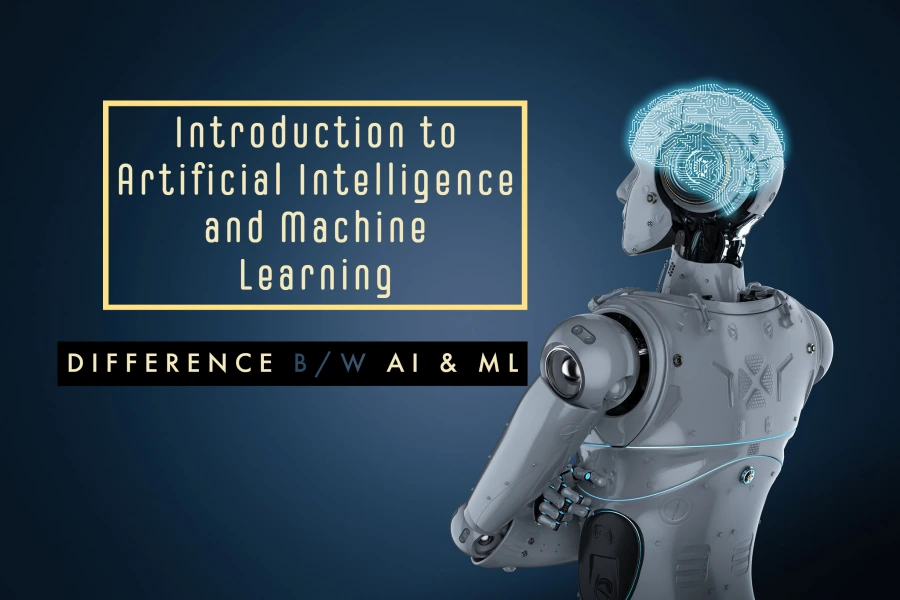When we have big and complicated data, it’s hard to work with it using normal ways of data analysis and processing. That’s where big data comes in. It helps us to make sense of this large and complex data. We use special tools and methods to extract important information and understand big data better.
The technological component of big data refers to the tools and technologies used to store, process, and analyze large and complex data sets. These technologies are designed to handle the volume, velocity, and variety of big data. It enables organizations to extract insights and value from their data.
4 Major Components of Big Data
Big data is a complex and diverse field, consisting of several major components. These components are essential for handling the enormous amounts of data generated by modern businesses and organizations. Given below are the main big data technology components:

Machine Learning
Machine learning is a type of computer technology that helps machines to learn and improve from experience, without being specifically programmed for every task. It involves training machines to recognize patterns in data. After that use those patterns to make predictions or decisions about new data. Machine learning is used in many different ways, such as filtering spam emails, recommending products based on your interests, detecting fraudulent activity, and recognizing objects in images. It’s like teaching machines to learn and get better, just like we humans do!
Cloud Computing
In the term cloud computing, “cloud” refers to the Internet. Cloud computing means using the internet to access a range of computer services, like servers, storage, and software, without having to physically store them on your own computer. You only need to pay for the resources you use, which can help you save money compared to managing your own computing infrastructure. This enables faster innovation, flexible resources, and cost-effectiveness for users.
Natural Language Processing (NLP)
It is the ability of a computer to process and understand human language as it is spoken. Essentially, it involves teaching computers to understand, interpret, and generate human language. This is done by analyzing and processing large amounts of text data. NLP is a technology that allows machines to comprehend and interpret human language, including words, phrases, and complete texts. It enables machines to effectively communicate with humans, improving the quality and efficiency of human-machine interaction.
Business Intelligence
Business Intelligence (BI) is a set of techniques and tools that are used to gather, analyze, and transform raw data into useful and meaningful insights for business decision-making. In simpler terms, BI helps businesses to make informed decisions by converting data into valuable insights. It involves collecting data from various sources and then cleaning and organizing it. After that analyzing it to identify patterns, trends, and other useful information.
After discussing the major technological component of big data, let’s check out some application areas of it.
Applications of Big Data
Big Data has numerous applications across various industries, including the following.
- Healthcare: Big Data is widely used healthcare sector to analyze large volumes of patient data to identify trends and anomalies that can be used to improve patient care and outcomes.
- Finance: In this sector, big data is used to analyze market trends and customer behavior, which helps financial institutions to make better investment decisions and manage risks.
- Transportation: One area where Big Data finds a great application is transportation. Monitoring traffic patterns and optimizing routes, can help to reduce congestion, make travel safer, and decrease travel times.
- Education: Big Data can be used in education to personalize learning experiences for students. This improves student outcomes and identifies areas where educational resources can be better allocated.
- Sports: Big Data plays a significant role in the sports industry, where it is used to analyze player performance, identify areas where training is required, and develop optimized game strategies.
Final Verdict
In conclusion, the four main technological components of big data are Machine learning, cloud computing, NLP, and business intelligence. Big data keeps getting bigger and more complex, so these technologies are really important for us to handle all of that information. Without big data technology components, it would be really difficult to make sense of all that data!
Frequently Asked Questions
Q. What are the 5 pillars of big data?
Ans. The five pillars of big data include Volume, Velocity, Variety, Veracity, and Value.
Q. What are the four C’s of big data?
Ans. There is a strong relationship between big data and big processes, and this connection is centered around the “Four Cs”: customers, chaos, context, and cloud.

Ankit Roy is a professional Technical Content Developer, Freelancer, and blogger. He holds a Masters’s degree in Computer Science and has worked as a Digital Marketing Strategist. With a deep understanding of technology trends like AI, ML, Big Data, Neural Networks, Network Infrastructure, etc., Ankit is able to communicate complex technical concepts in a clear and concise manner. He is a regular contributor to several websites and has authored numerous technical guides and instructional materials. In his free time, Ankit enjoys tinkering with new technologies and staying up-to-date with the latest developments in the field.




